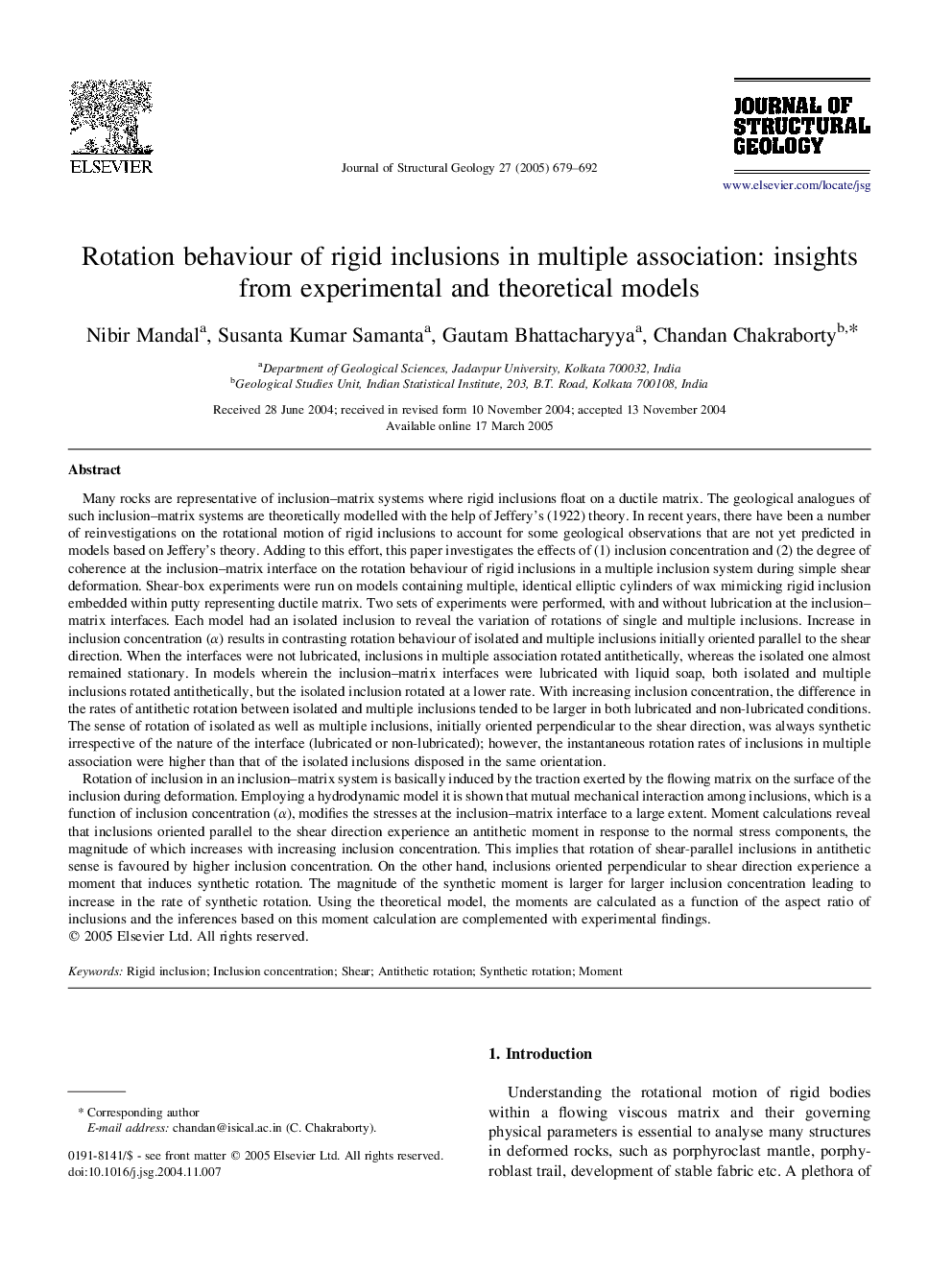| Article ID | Journal | Published Year | Pages | File Type |
|---|---|---|---|---|
| 9536307 | Journal of Structural Geology | 2005 | 14 Pages |
Abstract
Rotation of inclusion in an inclusion-matrix system is basically induced by the traction exerted by the flowing matrix on the surface of the inclusion during deformation. Employing a hydrodynamic model it is shown that mutual mechanical interaction among inclusions, which is a function of inclusion concentration (α), modifies the stresses at the inclusion-matrix interface to a large extent. Moment calculations reveal that inclusions oriented parallel to the shear direction experience an antithetic moment in response to the normal stress components, the magnitude of which increases with increasing inclusion concentration. This implies that rotation of shear-parallel inclusions in antithetic sense is favoured by higher inclusion concentration. On the other hand, inclusions oriented perpendicular to shear direction experience a moment that induces synthetic rotation. The magnitude of the synthetic moment is larger for larger inclusion concentration leading to increase in the rate of synthetic rotation. Using the theoretical model, the moments are calculated as a function of the aspect ratio of inclusions and the inferences based on this moment calculation are complemented with experimental findings.
Keywords
Related Topics
Physical Sciences and Engineering
Earth and Planetary Sciences
Geology
Authors
Nibir Mandal, Susanta Kumar Samanta, Gautam Bhattacharyya, Chandan Chakraborty,
